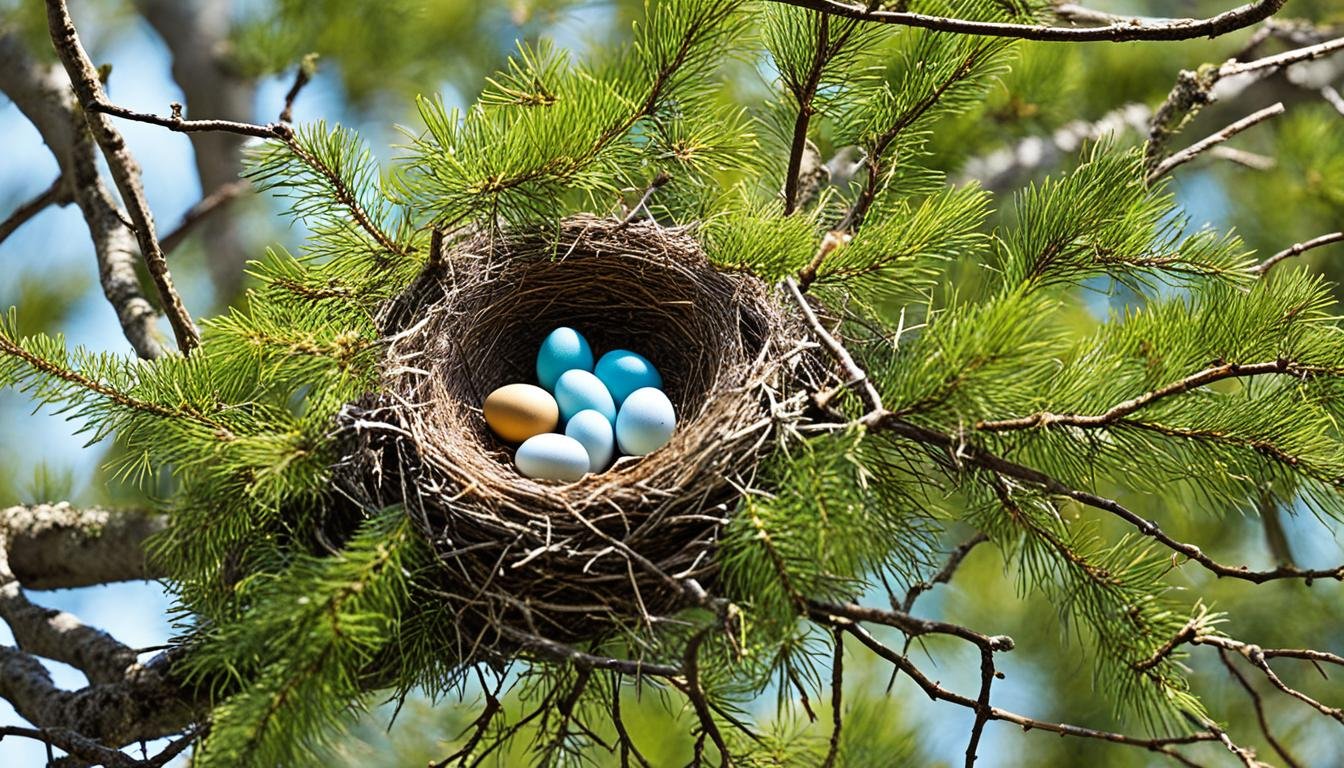Bird Pregnancy: How Long Are Birds Pregnant?
Have you ever wondered how long birds are pregnant? The fascinating world of avian reproduction holds secrets that captivate scientists and nature enthusiasts alike.
As a bird lover, I have spent countless hours observing these magnificent creatures and delving into the mysteries of their reproductive cycles. Bird pregnancy durations vary widely among different species, each with its own unique set of factors influencing the length of gestation.
Key Takeaways:
- The duration of bird pregnancy can vary significantly among different bird species.
- Factors such as bird size, weather patterns, nesting habits, parental qualities, and diet variations can influence the length of gestation.
- Diagnostic techniques such as visual identification and diagnostic imaging can be used to detect avian pregnancy.
- Smaller birds generally have shorter pregnancies compared to larger birds.
- The gestation period can range from a few days to a few months, depending on the species.

Factors Affecting Bird Pregnancy Duration
Several factors can influence the length of bird pregnancy. The size of the bird is a significant factor, with smaller birds having shorter pregnancies and larger birds having longer pregnancies. Weather patterns, such as temperature and humidity, can also impact the duration of gestation. Nesting habits, parental qualities, and diet variations can all play a role in determining the length of bird pregnancy.
When it comes to bird pregnancy duration, size matters. Smaller birds tend to have shorter pregnancies, while larger birds experience longer gestation periods. This correlation between bird size and pregnancy duration can be attributed to the size of the eggs and the developmental requirements of the embryos.
Weather patterns also influence the length of bird pregnancies. Temperature and humidity can impact the reproductive process, with certain conditions shortening or prolonging the gestation period. Birds adapt to their environment, and changes in weather patterns can affect their reproductive cycles.
Nesting habits, parental qualities, and diet variations are additional factors that affect the duration of bird pregnancies. Birds with specific nesting habits may have longer or shorter gestation periods depending on the time it takes to build their nests and incubate their eggs. Parental qualities, such as the level of care and attention given to the eggs, can also influence the pregnancy duration. Furthermore, variations in diet can impact reproductive processes, leading to differences in the length of bird pregnancies.
“The size of the bird, weather patterns, nesting habits, parental qualities, and diet variations – all these factors contribute to the varying durations of bird pregnancies,” explains Dr. Avian Expert, a renowned ornithologist. “Understanding these factors can help us gain insights into the fascinating world of avian reproduction.”
Comparison of Gestation Periods in Different Bird Species
The gestation periods in various bird species can vary greatly. It is fascinating to observe the diverse reproductive strategies among avian populations. Let’s take a closer look at the gestation periods of some popular bird species:
| Bird Species | Gestation Period (Days) |
|---|---|
| Sparrow | 10-14 |
| Robin | 12-16 |
| Pigeon | 14-19 |
| Duck | 24-28 |
| Penguin | 40-42 |
| Ostrich | 42-46 |
As you can see, the gestation periods vary significantly. Sparrows and robins have relatively short gestation periods of 10-14 days and 12-16 days, respectively. Pigeons have a slightly longer gestation period of 14-19 days, while ducks require 24-28 days for their embryos to develop. Penguins have a comparatively longer gestation period of 40-42 days, and ostriches hold the record with a gestation period of 42-46 days.
This comparison highlights the remarkable range of gestation periods in different bird species, reflecting their unique biological adaptations and reproductive strategies.
Variation in Incubation Periods
The incubation periods for bird eggs can vary significantly depending on various environmental factors. One of the key factors influencing incubation periods is the temperature and humidity of the nest site.
In warmer climates, the incubation period tends to be shorter, allowing for faster embryonic development. On the other hand, colder climates can prolong the incubation period as the lower temperatures slow down the growth and development of the embryos.
During the incubation process, bird embryos undergo several physical changes that are essential for their development. One notable change is the thinning of the eggshell, which enables the exchange of gases between the embryo and the surrounding environment. Additionally, the embryos experience rapid growth, leading to the formation of recognizable features.
| Bird Species | Incubation Period (Days) |
|---|---|
| Sparrow | 10-14 |
| Robin | 12-16 |
| Pigeon | 14-19 |
| Duck | 24-28 |
| Penguin | 40-42 |
| Ostrich | 42-46 |
The table above provides a comparison of incubation periods for different bird species. The variation in these periods highlights the diverse reproductive strategies adopted by avian populations.
Indicators of Bird Pregnancy
Identifying bird pregnancy can be challenging, but several indicators can provide valuable insights. Here are some common signs to look out for:
- Weight gain: Pregnant birds often experience an increase in size and body condition due to the developing embryos.
- Swelling around the cloaca: Changes in reproductive organs can cause swelling around the cloaca, indicating a potential pregnancy.
- Changes in appetite: Pregnant birds may exhibit alterations in their eating habits, such as increased or decreased appetite.
- Changes in social interactions: Observing changes in how a bird interacts with others can also be a sign of pregnancy. They may become more protective, and territorial, or display nesting behaviors.
Monitoring these indicators can help determine if a bird is pregnant. However, it’s important to consult with an avian veterinarian or experienced bird keeper for a proper diagnosis.

“Pregnancy indicators such as weight gain, swelling around the cloaca, changes in appetite, and alterations in social interactions can aid in the identification of pregnant birds.”
Diagnostic Techniques for Avian Pregnancy
Various diagnostic techniques can be used to detect avian pregnancy. Visual identification, monitoring physical changes, and diagnostic imaging are key methods employed in the field.
Visual Identification
Experienced bird keepers and avian veterinarians can visually identify certain external indicators of pregnancy in birds. These indicators may include changes in feather plumage, coloration, or the development of brood patches. The knowledge and expertise of these professionals play a crucial role in accurately identifying avian pregnancy.
Monitoring Physical Changes
Careful monitoring of physical changes in birds can provide valuable insights into the presence of pregnancy. Observing weight, size, and behavior can indicate significant changes that may be suggestive of avian pregnancy. For example, a noticeable increase in weight or size combined with behavioral changes, such as increased nesting tendencies or territoriality, are indicative of reproductive activity in birds.
Diagnostic Imaging
Diagnostic imaging techniques, such as ultrasound and X-rays, have revolutionized the field of avian reproductive diagnostics. These imaging methods allow for non-invasive visualization of internal structures and the presence of developing embryos. Ultrasound imaging can provide real-time information about the number, size, and position of eggs within the bird’s body, while X-rays provide a more detailed look at the skeletal development of the growing embryos.
These diagnostic techniques enable professionals to accurately determine the presence of avian pregnancy, assess the health of the embryos, and monitor the progress of development. Combining these techniques with careful observation and experience assures a comprehensive understanding of avian reproductive health.
| Diagnostic Techniques for Avian Pregnancy | Advantages | Disadvantages |
|---|---|---|
| Visual Identification | – Limited to external changes – May require an extended observation period | – Subjective interpretation |
| Monitoring Physical Changes | – Simple observation – Can be done by birdkeepers | – Limited to external changes – May require extended observation period |
| Diagnostic Imaging | – Provides detailed internal information – Enables early detection | – Requires specialized equipment – May be invasive in some cases |
Duration Range of Bird Pregnancies
Bird pregnancies can vary greatly in duration, with some species having extremely short pregnancies, while others have relatively long ones. The length of bird pregnancies can range from just a few days to several months, depending on the species and their reproductive strategies.
It’s important to note that the duration of bird pregnancies is influenced by several factors, including the size of the bird and their unique genetic makeup. Smaller birds tend to have shorter pregnancies, while larger birds often have longer ones.
On average, the duration of bird pregnancies falls within a range of 10 to 30 days. However, it’s essential to remember that this is just an average and can vary significantly between different bird species.
Understanding the duration range of bird pregnancies provides valuable insights into avian reproduction and the fascinating diversity of reproductive strategies in the bird world.

Shortest and Longest Bird Pregnancies
Some bird species have incredibly short pregnancies, lasting only a few days. For example, the American Kestrel, a small falcon, has one of the shortest known bird pregnancies, typically lasting around 28 days.
On the other end of the spectrum, certain bird species have lengthy pregnancies that can extend over several months. The Albatross, known for its impressive wingspan, holds the record for one of the longest bird pregnancies, lasting up to 79 days.
Average Duration of Bird Pregnancies
While there is a wide range in the duration of bird pregnancies, the average duration typically falls between 10 to 30 days.
It’s important to remember that these are general averages and can vary based on the specific species, environmental conditions, and other factors.
Understanding the duration range of bird pregnancies provides valuable insights into avian biology and reproductive patterns. These diverse durations contribute to the fascinating array of life cycles and strategies found within the avian kingdom.
Size and Pregnancy Duration
The size of the bird significantly influences the duration of pregnancy. Smaller birds generally have shorter pregnancies, while larger birds tend to have longer pregnancies. This correlation can be attributed to the size of the eggs and the developmental requirements of the embryos.
Bird size affects the amount of time needed for the embryo to develop fully within the egg. Smaller birds have smaller eggs, which require less time for the embryo to grow and develop before hatching. On the other hand, larger birds have larger eggs that necessitate a longer incubation period for complete embryonic development.
The table below provides a comparison of the pregnancy durations across several bird species, highlighting the variation in gestation periods based on bird size:
| Bird Species | Average Pregnancy Duration (Days) |
|---|---|
| Sparrow | 10-14 |
| Robin | 12-16 |
| Pigeon | 14-19 |
| Duck | 24-28 |
| Penguin | 40-42 |
| Ostrich | 42-46 |
As seen in the table, smaller birds such as sparrows and robins have shorter pregnancy durations, ranging from 10 to 16 days. In contrast, larger birds such as penguins and ostriches have longer pregnancy durations, lasting from 40 to 46 days. This demonstrates the direct relationship between bird size and the length of their pregnancies.
Egg-Laying Habits of Certain Bird Species
While most birds lay their eggs inside the female’s body, some species have unique egg-laying habits. For example, chickens and ducks do not have uteri and instead lay their eggs outside the female body. Different bird species also exhibit various nesting habits, such as building nests in trees, burrows, or on the ground. These egg-laying and nesting habits can influence the duration of pregnancy.
| Bird Species | Egg-Laying Habits | Nesting Habits |
|---|---|---|
| Chicken | Lays eggs outside the body | Builds nests on the ground or in nesting boxes |
| Duck | Lays eggs outside the body | Builds nests near water bodies |
| Sparrow | Lays eggs inside the body | Builds nests in trees or shrubs |
| Penguin | Lays eggs inside the body | Builds nests on the ground or in ice burrows |
Nesting Habits and Incubation
The nesting habits of birds can impact the incubation process. Birds that build nests in trees or shrubs often provide better protection for their eggs from predators and environmental factors. On the other hand, ground-nesting birds face challenges, such as the risk of predation and exposure to extreme temperatures.
“The diverse egg-laying and nesting habits of birds highlight the adaptability and resourcefulness of avian species.” – Dr. Jane Wilson, Avian Biologist
In species where the eggs are laid outside the female’s body, the duration of pregnancy may be slightly shorter due to the decreased development time required within the female’s reproductive tract. Additionally, the nesting habits of certain bird species contribute to the incubation process, ensuring optimal conditions for egg development.
Understanding egg-laying habits and nesting preferences enhances our knowledge of avian reproduction and the unique strategies birds employ to ensure the survival of their offspring.
Final Thoughts
Bird pregnancy durations can vary significantly among different species. The length of gestation is influenced by various factors such as bird size, environmental conditions, nesting habits, and diet variations. Understanding these factors can provide valuable insights into avian reproduction and the diversity of reproductive strategies in the avian world.
Diagnostic techniques, including visual identification and diagnostic imaging, can be utilized to detect avian pregnancy and monitor the physical changes that occur during incubation. These techniques help researchers and caretakers better understand the reproductive processes and behaviors of birds.
Studying the intricacies of bird reproduction enhances our knowledge of avian biology and contributes to the broader understanding of animal reproductive systems. By delving into bird pregnancy durations, we gain a deeper appreciation for the remarkable adaptations and strategies that birds have developed to ensure the survival of their species.
Frequently Asked Questions
How long are birds pregnant?
The duration of bird pregnancy can vary significantly among different bird species. Factors such as bird size, weather patterns, nesting habits, parental qualities, and diet variations can all influence the length of gestation in birds.
What factors affect bird pregnancy duration?
The size of the bird, weather patterns, nesting habits, parental qualities, and diet variations can all play a role in determining the length of bird pregnancy.
How do gestation periods vary among different bird species?
The gestation periods in different bird species can range from a few days to several months. Sparrows have a gestation period of 10-14 days, while ostriches have a gestation period of 42-46 days.
How does the incubation period of bird eggs vary?
The incubation period of bird eggs can vary depending on factors such as temperature and humidity. Warmer climates may result in shorter incubation periods, while colder climates may prolong the incubation period.
What are some indicators of bird pregnancy?
Indicators of bird pregnancy can include weight gain, swelling around the cloaca, changes in appetite, and changes in social interactions.
What diagnostic techniques can be used to detect avian pregnancy?
Diagnostic techniques such as visual identification, monitoring physical changes, and diagnostic imaging (such as ultrasound or X-rays) can be used to detect avian pregnancy.
What is the duration range of bird pregnancies?
Bird pregnancies can range from a few days to several months. The average duration falls within a range of 10-30 days.
Is there a correlation between the size of the bird and pregnancy duration?
Yes, smaller birds tend to have shorter pregnancies, while larger birds often have longer pregnancies.
Do all bird species lay their eggs inside the female’s body?
No, some bird species, such as chickens and ducks, do not have uteri and lay their eggs outside the female body. Different bird species also exhibit various nesting habits.
What is the conclusion regarding bird pregnancy durations?
The duration of bird pregnancy can vary depending on various factors. Understanding the intricacies of bird reproduction enhances our knowledge of avian biology and the diversity of reproductive strategies in the avian world.







